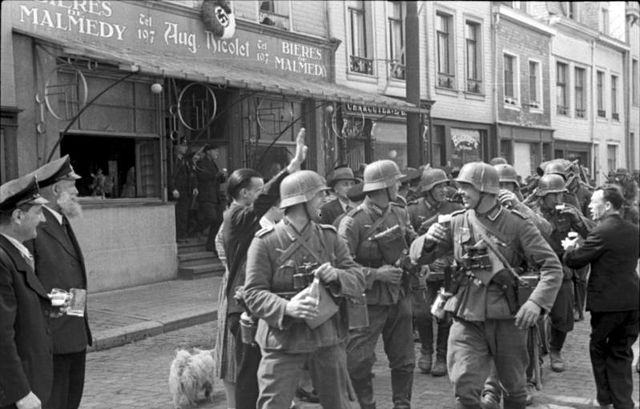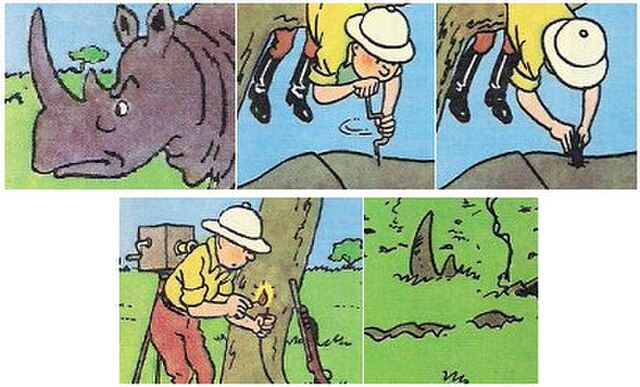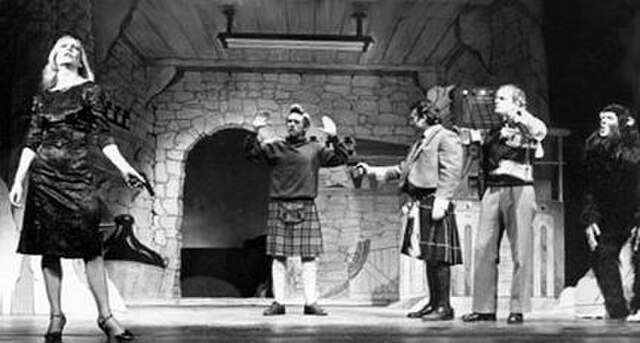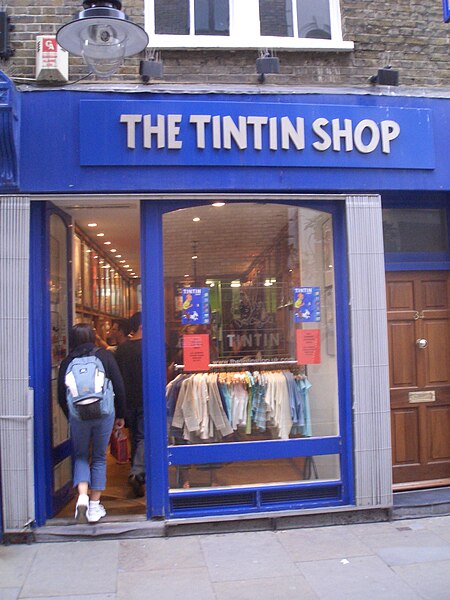Red Rackham's Treasure is the twelfth volume of The Adventures of Tintin, the comics series by Belgian cartoonist Hergé. The story was serialised daily in Le Soir, Belgium's leading francophone newspaper, from February to September 1943 amidst the German occupation of Belgium during World War II. Completing an arc begun in The Secret of the Unicorn, the story tells of young reporter Tintin and his friend Captain Haddock as they launch an expedition to the Caribbean to locate the treasure of the pirate Red Rackham.
Cover of the English edition
Nazi German soldiers in eastern Belgium in 1940. Red Rackham's Treasure and The Secret of the Unicorn were both written while Belgium was under German occupation.
Calculus was visually based upon the scientist Auguste Piccard.
Hergé deemed this frame from the story to be one of his two favourites from the entire Adventures of Tintin.
The Adventures of Tintin is a series of 24 comic albums created by Belgian cartoonist Georges Remi, who wrote under the pen name Hergé. The series was one of the most popular European comics of the 20th century. By 2007, a century after Hergé's birth in 1907, Tintin had been published in more than 70 languages with sales of more than 200 million copies, and had been adapted for radio, television, theatre, and film.
The early Adventures of Tintin naïvely depicted controversial images, which Hergé later described as "a transgression of my youth". In 1975, he substituted this sequence with one in which the rhino accidentally discharges Tintin's rifle.
Tintin and the Black Island at the Arts Theatre in the West End of London, by the Unicorn Theatre Company, in 1980–81
The Tintin Shop in Covent Garden, London
Belgian Post's series of postage stamps "Tintin on screen" issued 30 August 2011 featuring a chronological review of Tintin film adaptations made through years.








